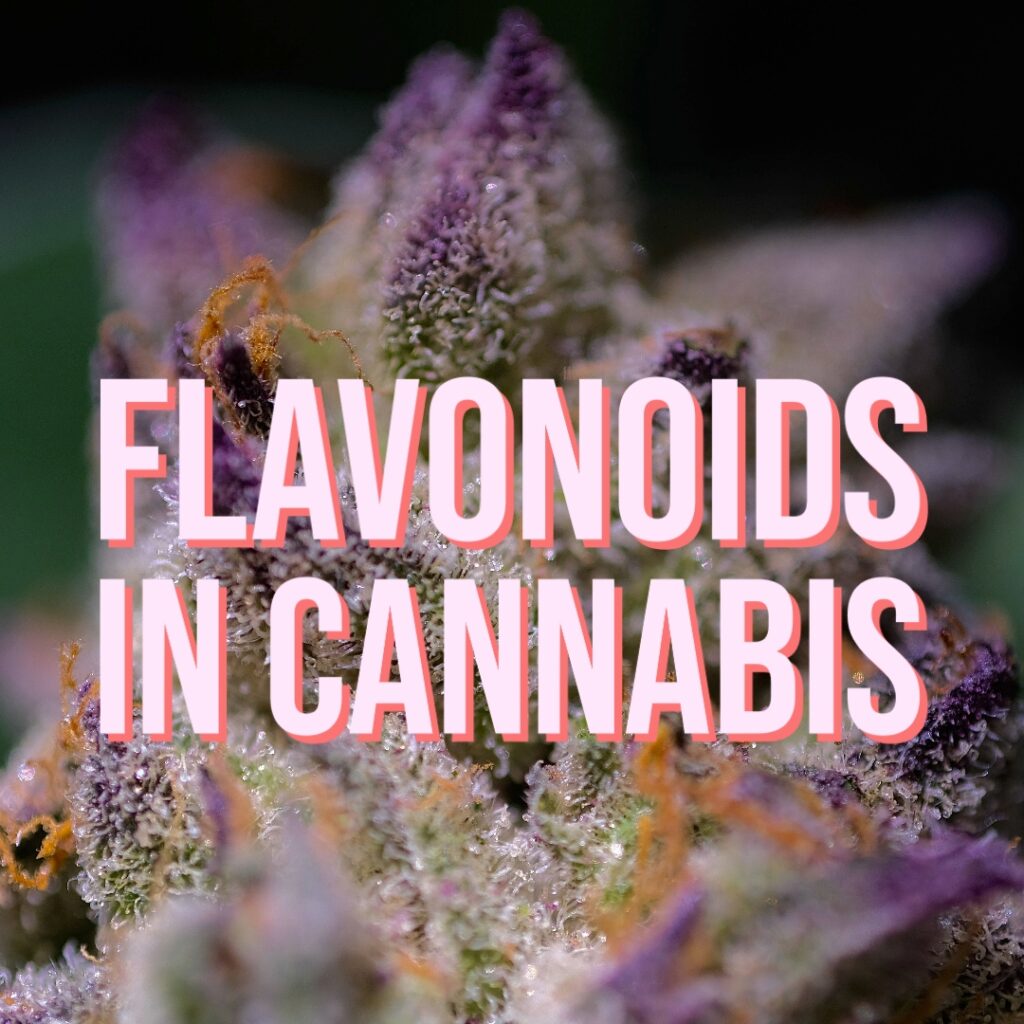Hello again, and welcome back!
Flavonoids in cannabis is a topic rarely discussed amongst cannabis enthusiasts, but it’s one that researchers have been studying for years. Let’s break down some of the flavonoids found in cannabis and discuss the role they play as well as some of their potential benefits. Keep in mind that the role flavonoids play in cannabis is only recently being studied so their potential therapeutic benefits are not certain.
Flavonoids are a group of plant-based compounds found in various fruits, vegetables, and herbs, including cannabis. Cannabis flavonoids are a diverse class of natural compounds that may provide a range of potential therapeutic benefits. There are over 20 flavonoids identified in cannabis, with the most studied ones being anthocyanidin, quercetin, kaempferol, and apigenin.
Anthocyanidin may have anti-cancer, anti-inflammatory, and anti-microbial, as well as the possible prevention of cardiovascular diseases. It also gives plants their red, purple, and blue hues. We will touch on this again when we cover “Why is Cannabis Purple?”. Currants, blueberries, grapes, and vegetables that are a red to purple-ish blue color are rich in anthocyanins.
Quercetin is known for its potential anti-inflammatory and antioxidant properties, which may be useful in treating conditions like allergies, arthritis, and cardiovascular disease. Quercetin is found in onions, green leafy vegetables like kale, and citrus fruits.
Kaempferol has been shown to likely have anti-inflammatory, antioxidant and neuroprotective effects, potentially benefiting those with conditions like Alzheimer’s and Parkinson’s disease. The richest sources of kaempferol are broccoli, kale, spinach, and wild leek greens.
Apigenin has been studied for its possible anti-anxiety and anti-cancer properties. If you’re looking for apigenin, you can find it in chamomile, parsley, oregano, celery, and vine-spinach.
Research has also shown that cannabis flavonoids may work synergistically with other cannabinoids, like THC and CBD, to enhance their therapeutic effects (Read “The Entourage Effect”). Some studies suggest that flavonoids may also increase the bioavailability of cannabinoids by inhibiting certain enzymes that break them down.
In addition to their potential therapeutic benefits, cannabis flavonoids also contribute to the plant’s unique aroma and taste (Read “Terpenes in Cannabis”). Understanding the role of flavonoids in cannabis may lead to the development of new and more effective cannabis-based therapies in the future.
So, bring this up during the next sesh, and tell folks to check out our blog every Tuesday and Thursday for new posts!
If you’re wanting to look deeper into this topic here are some links to follow…
https://www.ncbi.nlm.nih.gov/pmc/articles/PMC6835347/
https://www.ncbi.nlm.nih.gov/pmc/articles/PMC5613902/


